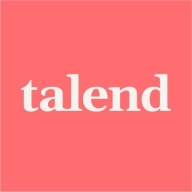

Elastic Search and Talend Data Integration compete in enhancing data handling capabilities. In most categories, Elastic Search appears to have the upper hand with better performance in speed, scalability, pricing, and support, while Talend offers more comprehensive integration features.
Features: Elastic Search is known for its powerful search capabilities, high performance, and scalability. It enables efficient handling of large datasets and integrates well with various tools like Logstash and Kibana. Talend Data Integration is strong in its robust data integration tools, supporting a wide range of data formats and transformation capabilities, emphasizing integration flexibility and toolset comprehensiveness.
Room for Improvement: Elastic Search could enhance user interface intuitiveness and improve support for specific custom queries. Talend Data Integration could benefit from better handling of large-scale data sets and reducing the complexity of its learning curve. Both products would gain from expanding community support and documentation.
Ease of Deployment and Customer Service: Elastic Search offers a simpler deployment model with robust community support, aiding troubleshooting. Talend has a structured deployment process and formal customer service, supporting intricate integration projects more effectively. Elastic Search supports quick deployment, while Talend's customer service smooths the deployment experience of complex projects.
Pricing and ROI: Elastic Search typically offers a cost-effective setup, providing strong ROI due to scalability without major recurring costs. Talend Data Integration requires higher initial investment but delivers significant ROI through integration efficiency and feature depth. Elastic Search is known for economical scalability, whereas Talend justifies its initial costs with functional depth and long-term benefits.
We have not purchased any licensed products, and our use of Elastic Search is purely open-source, contributing positively to our ROI.
It is stable, and we do not encounter critical issues like server downtime, which could result in data loss.
The main benefits observed from using Elastic Search include improvements in operational efficiency, along with cost, time, and resource savings.
It has helped us save a lot of time by automating repetitive data processes and reducing manual interventions.
They didn't want to use separate ETL tools for MDM or for TMC and data preparation, which is all included in one package.
The customer support for Elastic Search is one of the best I have ever tried.
They have always been really responsible and responsive to my requests.
I would rate technical support from Elastic Search as three out of ten.
The support team is responsive when we raise issues, and they usually provide clear guidance or solutions.
The customer support for Talend Data Integration is very good; whenever I raise a ticket in the customer portal, I immediately receive an email, and follow-up communication is prompt.
I would rate its scalability a ten.
Since we're on the cloud, whenever we need to upgrade or add resources, they handle everything.
I can actually add more storage and memory because I host it in the cloud.
By using features like job parallelization and modular design, we can expand our data flows without having to rebuild everything.
The scalability of Talend Data Integration is good; if it weren't scalable, it wouldn't be reliable.
The data transfer sometimes exceeded the bandwidth limits without proper notification, which caused issues.
The stability of Elasticsearch was very high.
Elastic Search is quite stable.
Once the jobs are properly designed and deployed, they run reliably without major issues.
This can create problems for new developers because they have to quickly switch to another version.
It is primarily based on Unix or Linux-based operating systems and cannot be easily configured in Windows systems.
The consistency and stability of Elasticsearch are commendable, and they should keep up the good work.
It would be great to have more ready-to-use connectors for modern cloud and SaaS platforms.
Talend Data Integration can be improved by reducing the license cost, as it is a bit high compared to other tools, which can be a burden for small-scale companies wanting to buy a license.
Regarding ETL, Talend Data Integration is great, but concerning real-time data processing, people are not really sure about Talend Data Integration or might not know how it provides such types of flexibilities.
We used the open-source version of Elasticsearch, which was free.
Elastic pushes clients to buy the Enterprise edition instead of the Premium edition, and we don't see the value in that other than to spend more money more quickly.
My experience with Talend Data Integration's pricing, setup cost, and licensing is that it is a bit higher compared to other tools, making it not very affordable.
Elastic Search makes handling large data volumes efficient and supports complex search operations.
The most valuable feature of Elasticsearch was the quick search capability, allowing us to search by any criteria needed.
The speed with which Elastic Search is able to search through all of the documents we place into it is quite remarkable, as we search through 65 billion documents in less than a second in most cases, on a constant consistent basis.
By automating daily data loading processes, we reduced manual effort by around three or four hours per day, which saved roughly 60 to 80 hours per month.
Flexibility is a key feature I appreciate about Talend Data Integration, especially the integration of Java within it and the ease of integrating with multiple source repositories such as GitHub and Bitbucket.
The best feature of Talend Data Integration is its multiple data DB components; we have almost all the components and also cloud versions, with TMC allowing us to perform data preparation and data stewardship.
| Product | Market Share (%) |
|---|---|
| Elastic Search | 2.0% |
| Talend Data Integration | 1.5% |
| Other | 96.5% |


| Company Size | Count |
|---|---|
| Small Business | 32 |
| Midsize Enterprise | 9 |
| Large Enterprise | 36 |
| Company Size | Count |
|---|---|
| Small Business | 2 |
| Midsize Enterprise | 2 |
| Large Enterprise | 4 |
Elasticsearch is a prominent open-source search and analytics engine known for its scalability, reliability, and straightforward management. It's a favored choice among enterprises for real-time data search, analysis, and visualization. Open-source Elasticsearch is free, offering a comprehensive feature set and scalability. It allows full control over deployments but requires managing and maintaining the infrastructure. On the other hand, Elastic Cloud provides a managed service with features like automated provisioning, high availability, security, and global reach.
Elasticsearch excels in handling time-sensitive data and complex search requirements across large datasets. Its scalability allows it to handle growing data volumes efficiently, maintaining high performance and fast response times. Integrated with Kibana, Elasticsearch enables powerful data visualization, providing real-time insights crucial for data-driven decision-making.
Elastic Cloud reduces operational overhead and improves scalability and performance, though it comes with associated costs. It is available on your preferred cloud provider — AWS, Azure, or Google Cloud. Customers who want to manage the software themselves, whether on public, private, or hybrid cloud, can download the Elastic Stack.
At its core, Elasticsearch is renowned for its full-text search capabilities, capable of performing complex queries and supporting features like fuzzy matching and auto-complete.
Peer reviews from various professionals highlight its strengths and weaknesses. Pros include its detection and correlation features, flexibility, cloud-readiness, extensibility, and efficient search capabilities. However, users have noted challenges like steep learning curves, data analysis limitations, and integration complexities. The platform is generally viewed as stable and scalable, with varying degrees of satisfaction regarding its usability and feature set.
In summary, Elasticsearch stands out for its high-speed search, scalability, and versatile analytics, making it a go-to solution for organizations managing large datasets. Its adaptability to different enterprise needs, robust community support, and continuous development keep it at the forefront of enterprise search and analytics solutions. However, potential users should be aware of its learning curve and the need for skilled personnel for optimization.
Talend Data Integration efficiently handles data transformation and integration with ease, supporting complex business needs. It enables seamless data management across all sources.
Talend Data Integration offers a robust platform for managing and transforming data. It connects disparate systems, enabling data flow across various environments. Users benefit from its ability to streamline processes and improve data accuracy. Its user-friendly interface and flexibility make it a preferred choice for data integration experts.
What are the key features of Talend Data Integration?In finance, Talend Data Integration enhances transaction data processing and compliance reporting. In healthcare, it ensures accurate patient data management, while in retail, it optimizes inventory and customer data analysis. Its adaptability makes it valuable across multiple sectors, addressing specific industry requirements.
We monitor all Cloud Data Integration reviews to prevent fraudulent reviews and keep review quality high. We do not post reviews by company employees or direct competitors. We validate each review for authenticity via cross-reference with LinkedIn, and personal follow-up with the reviewer when necessary.